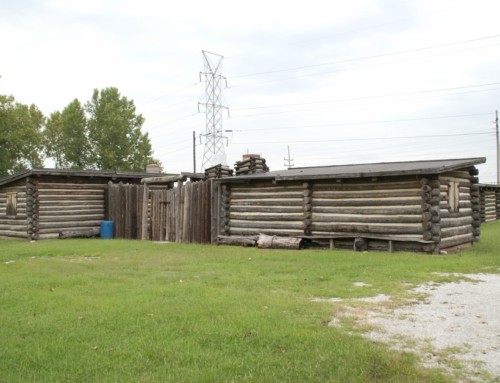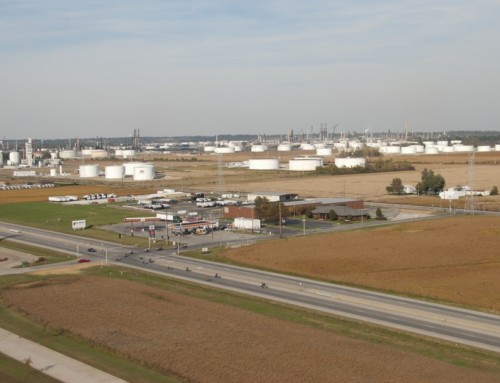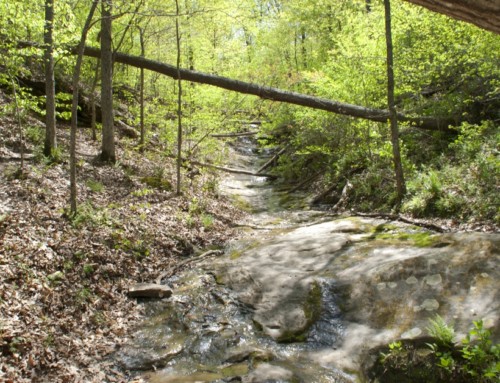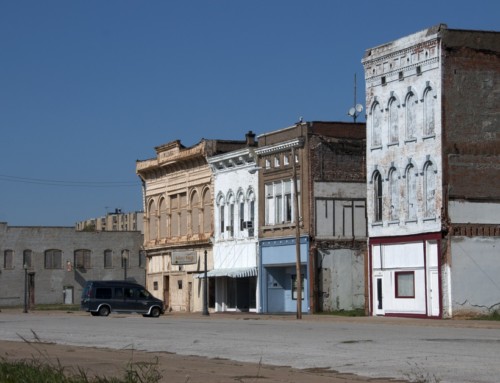History
Israel Atherton purchased the land around present-day Dallas City in 1836 and built a log cabin but didn’t stick around all that long. He sold the land to John Finch, who platted a village in 1848. It got off to a slow start. Nearby Pontoosuc was already established and had more people and the post office. A visit by Abraham Lincoln during his Senate campaign in 1858 seems to have inspired folks to get their act together. It must have worked, as the village officially incorporated a few months later.
There’s an old story that President James K. Polk and his Vice President, George M. Dallas, got stranded on a sandbar near town, so the island where they got stuck was named for Polk and the village for Dallas. It’s a fun story… but it didn’t happen. There’s no record that Polk every traveled on the Upper Mississippi River, much less with his VP. What’s more likely is that Polk’s veto of the 1846 Rivers and Harbors Bill didn’t go over too well with folks along the Mississippi, so someone thought it would be a nice joke to invent the sandbar story and stick his name on an island, while his giving his Vice President’s name to the city. They would probably get a kick out of the fact that Polk Island is now essentially gone, thanks to the higher river levels brought on by the completion of the Keokuk dam, while Dallas City lives on.
One person who apparently did get stuck on a sandbar was Henry Farnwald Black, who got hung up near Dallas City in 1857 when he was floating logs downriver for processing. When he went into town to sell the logs, he must have liked what he saw, since he decided to stay. He went on to start the first lumber yard in Dallas City and lived in a house that incorporated the log cabin of Israel Atherton.
The river has always been an essential part of life for residents of Dallas City, regardless of the time of year. In winters past, teams of workers cut blocks of ice from the Mississippi, then stored them in warehouses packed in sawdust; those blocks of ice provided cooling relief well through the summer. During the warmer months, steamboats made regular stops. The passengers and the men who worked on those boats found plenty of opportunities to amuse themselves in the bars that lined the Dallas City riverfront. Those bars could get a little rowdy, so the people who actually lived in Dallas City would pull down the blinds (and reach for the earplugs, I assume) when a boat arrived and the bars filled up.
Traveling on the river was the preferred method of getting around the area for quite a while. The roads had two basic conditions: muddy or dusty. Dallas City merchants hired a guy to water the streets in summer to keep the dust down, but there was no easy fix for the mud.
Among the city’s residents—people of English, Scotch, Irish, and German ancestry, mostly—were quite a few commercial fishermen. They stayed busy catching and selling catfish, buffalo fish, white perch, and hackleback (shovelnose sturgeon), at least until the carp arrived. Common carp were introduced—intentionally—in the Mississippi at the end of the 19th century and did quite well.
River towns like Dallas City always had a certain number of families who lived in houseboats on the river, folks who drifted from town to town. They might stick around for a year or two, making a living by hunting, trapping, and fishing, and maybe also growing a vegetable garden on the river bank near their boat. By 1910, many of these families were looking for steadier ways to earn a buck and took jobs in town, gradually integrating into the community.
Dallas City got its first rail connection in the 1860s when the Carthage and Burlington Railroad arrived, then got another one about 20 years later when the Santa Fe Railroad passed through town. At the end of the 19th century, Lou Burg ran a buggy factory that employed about a hundred men; those buggies were sold throughout the US. He did well enough to build the big stone house at the north end of town. When buggies became obsolete, Burg turned to manufacturing automobiles around 1912; he closed that down in 1919.
Dallas City also had a factory where buttons were cut out of mussel shells, then shipped to Burlington, Iowa for finishing. In 1925, workers at the Burlington factory went on strike, so the company moved their equipment to Dallas City, creating the impression that the work would be permanently moved there. It wasn’t. After the strike was settled, the finishing equipment went back to Burlington.
William Love showed up in 1910 with the grand plan of turning Dallas City into a metropolis. He attracted some impressive investors but couldn’t attract any businesses, so his investors lost their money. Undaunted, he went up to Lomax and tried again, with pretty much the same result.
The Roaring ‘20s were pretty exciting in Dallas City, like other places in the US. Some 10,000 people turned out in 1920 to watch an airplane fly overhead; it was piloted by two Frenchmen touring the country. Around the same time, some folks from Chicago bought land and built a foundry in town. They took out a $50,000 insurance plan and, surprisingly, the plant burned down not long after it opened. Investigators decided it was arson.
Dallas City today has about a thousand residents, many of whom commute to jobs in other places. The river is still an important part of life for the folks who live here.
Hey! What’s that? The 3-story stone building in the middle of town was built in 1895 as a high school and probably modeled after a German castle.
Exploring the Area
On October 23, 1858, Abe Lincoln visited the city during his campaign for a seat in the US Senate; his speech drew a raucous crowd several thousand strong. There’s a marker on the riverfront commemorating his visit.
**Looking for more places to visit along the Mississippi River? Check out Road Tripping Along the Great River Road, Vol. 1. Click the link above for more. Disclosure: This website may be compensated for linking to other sites or for sales of products we link to.
Where to Sleep
Camping
Edge of the River Resort (971 W. 1st Street) is a small campground in a shady area next to the river. The sites have good views and aren’t terribly cramped.
Resources
- Post Office: 45 E. Third St.
Community-supported writing
If you like the content at the Mississippi Valley Traveler, please consider showing your support by making a one-time contribution or by subscribing through Patreon. Book sales don’t fully cover my costs, and I don’t have deep corporate pockets bankrolling my work. I’m a freelance writer bringing you stories about life along the Mississippi River. I need your help to keep this going. Every dollar you contribute makes it possible for me to continue sharing stories about America’s Greatest River!
©Dean Klinkenberg, 2024, 2021, 2018,2013,2011






